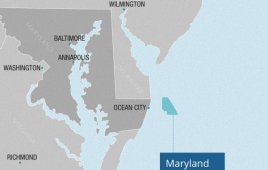Editor’s note: More than once has the aging state of the U.S. transmission infrastructure been big pothole in the road to a 21st century grid. The grid upgrade would be an ideal goal for somebody’s new administration.
A recent white paper from Navigant Research provides a far-reaching view of the connectivity needs of electric utilities, exploring approaches and technologies, with case studies of projects designed to develop an Energy Superhighway. http://bit.ly/2eBDudU

A recent white paper from Navigant Research is said to provide a far-reaching view of the connectivity needs of electric utilities, exploring approaches and technologies, with case studies of projects designed to develop an Energy Superhighway.
Over the last decade, with the advent of smart grid technology, utilities have been prompted to invest in a wide array of networking technologies for a variety of purposes, including advanced metering infrastructure (AMI), distribution substation and feeder automation, and other monitoring and IT functions. These networks have frequently been built and managed within operational silos, but going forward, utilities must consider a network-centric strategy that will support both the smart grid applications of today and as-of-yet undefined needs of tomorrow. According to a recent white paper from @NavigantRSRCH, an Energy Superhighway will be crucial to the successful delivery and management of energy services.
“In the Energy Cloud, the function of a utility will not be limited solely to the generation, transmission, and distribution of electric power; it will be about empowering end users through ubiquitous, robust connectivity to community resources and the provision of related services,” says Richelle Elberg, principal research analyst with Navigant Research. “The Energy Superhighway will be the backbone upon which the utility of the future will develop and thrive within a highly networked grid.”
Comparable to the buildout of the US Interstate Highway System in the 1950s, massive economic growth is a possible outcome of a concerted effort to develop the Energy Superhighway, according to the report. As part of the broader Energy Cloud concept, the underlying communications infrastructure will be foundational to utilities wishing to embrace the opportunities presented by this emerging paradigm.
The white paper, Communications in the Energy Cloud, provides a far-reaching view of the connectivity needs of electric utilities—today and tomorrow. The report examines the reasons why a network-centric approach—rather than a silo-based, application-centric strategy—is imperative for power utilities today. It also explores which connectivity technologies are best positioned to be future-proof and provides several case studies of visionary utility projects designed to develop the Energy Superhighway. Each of the topics in this white paper is examined more deeply in research reports and ongoing research from Navigant Research’s Grid Networking and Communications Research Service. An Executive Summary of the report is available for free download on the Navigant Research website.
Filed Under: Uncategorized




